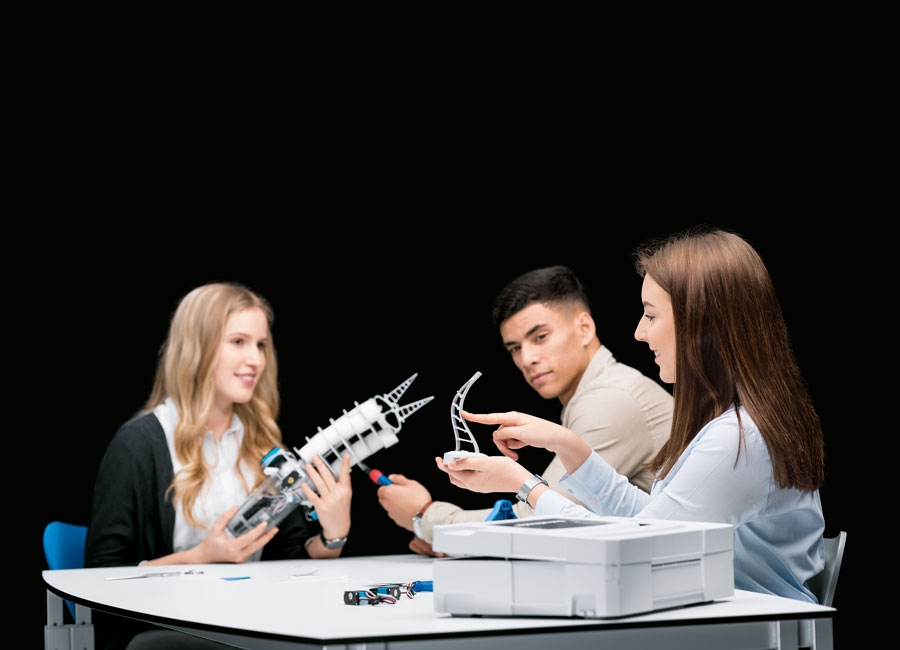
Festo’s new bionic kits help steer students to STEM subjects
October 5, 2018
By Manufacturing AUTOMATION
 Bionics Kits for creative minds: Discovering the fascinating world of bionics in a playful way.
Bionics Kits for creative minds: Discovering the fascinating world of bionics in a playful way. October 5, 2018 – Festo has debuted a bionic “kit” designed to promote enthusiasm for STEM subjects among youth.
Last month at the Maker Faire New York, Festo showcased Bionics4Education, an experimenting and learning kit developed by an interdisciplinary team of engineers, designers, computer scientists and biologists from the Bionic Learning Network, together with the experts from Festo Didactic as an educational supplier.
The objective is to use projects inspired by bionics in order to get young people enthusiastic about the STEM subjects (mathematics, computer science, natural sciences and technology) and about working with bionics. The didactic concept comprises both a learning kit (bionics kit) for practical and solution-based learning, and a digital learning environment.
The bionics kits are mainly intended for pupils from comprehensive schools aged 14 to 18 years. The first Festo bionics learning kit, which is to be launched on the market later in 2018, contains the construction materials required for three different bionics projects: the Bionic Elephant’s Trunk, an adaptive gripper with “Fin Ray Effect”; the Bionic Fish; and the Bionic Chameleon Gripper.
Each kit is fitted out with small servo motors, electronic components and plastic elements such as the company’s Fin Ray structures. The students are set the task of combining these with materials they select themselves, in an imaginative and appropriate way. Cable fasteners, small sandbags, cardboard and foam material are just some of the elements that would be suitable for creating highly individual, reusable model variants. Children and adolescents can learn in a playful way to build their own animal robots inspired by nature, and then to operate them by remote control via interfaces on a PC or a mobile device such as a smartphone.
The hardware is supplemented by a digital learning environment with further content relating to bionics and some tips for practical implementation at school or at home. The students can also find out more about the working methods of the Bionic Learning Network team on the website. The didactic material and information for Bionics4Education are provided as open educational resources. School teachers, along with STEM programme managers or other interested parties, can download content such as CAD drawings and software codes free of charge. Components can also be generated on one’s own 3D printer.
The kits also point out career prospects in the STEM professions and related courses of study, providing orientation for a choice of study.
Advertisement
- Study: Canadian firms are overconfident when it comes to cyberattacks
- ENI58L rotary encoder with BlueBeam from Pepperl+Fuchs reaches high rotation speeds